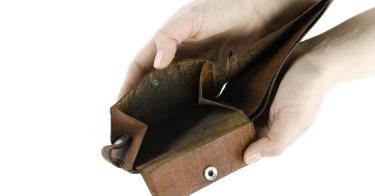A common sound bite today is that the Federal Reserve’s recent interest rate hike is pushing the nation toward recession. But that’s like beginning a book on page 813. The origin of today’s economic malaise is prolonged and massive federal budget deficits, combined with a Fed willing to finance those deficits. That’s precisely what we’ve seen for the last two years.
Many on the political left flat-out deny this reality, but many on the political right misunderstand what’s happening as well. The combination of fiscal and monetary policy is subtler and more complex than simple but shallow political talking points.
One such hackneyed phrase is that the Fed “sets” interest rates. Not exactly. The Fed sets the rate it charges for short-term loans to financial institutions, but it can only target other rates outside of its direct control. That means the Fed acts to influence rates, not set them, with the most watched interest rate being what banks charge each other for short-term loans.
The Fed influences this rate by buying and selling financial securities (debt instruments). When everyone else buys and sells those same securities, money merely changes hands, but when the Fed does it, money is created or extinguished.
>>> The Fed’s Monetary Malpractice Will Cost You
This phenomenon occurs because the Fed’s monetary account has no balance in it, so when the Fed writes checks from its account, the money is literally created, like cash off a printing press. Likewise, when money enters the account from outside, the money vanishes, like cash going into a fire; the account’s balance is perpetually zero.
By this mechanism, the Fed can theoretically flood the market with cash in times of crisis, avoiding panic-inducing bank runs. Likewise, the Fed can then soak up that excess liquidity as soon as financial markets have stabilized, avoiding inflation.
But today’s Fed lacks the discipline to turn the theory into reality.
No man can serve two masters, and the same is true for institutions like the Fed. Instead of maintaining a laser focus on inflation, it has been preoccupied with appeasing Congress and the Biden administration, kowtowing to left-wing talking points on topics like diversity. Worse still, the Fed has financed the profligate spending in Washington by creating money for two years, and that has caused inflation.
Even as the Fed dilatorily acts to douse the inflation fire it started, it is working at cross-purposes to continue federal deficit spending. That’s because the Fed is targeting interest rates and not inflation rates—another subtle difference.
As the federal government continues racking up debt, it is constantly borrowing billions of dollars, draining that money out of capital markets. As savings (loanable funds) become scarcer, their price rises; that price is known as the interest rate.
When the government borrows more money, it drives up the interest rate, and the Fed must add liquidity (print more money) to prevent interest rates from increasing above its target. Consequently, the Fed’s approach of targeting interest rates in the face of mounting government deficits and debt has had a minimal impact on inflation. The Fed is robbing Peter to pay Paul.
But the Fed is slowly catching on, as it has in the past, and is targeting ever-higher interest rates in response to the never-ending borrowing by Congress and the president. Squeezing excess money from the economy will tame inflation, but the collateral damage, as it always has been under the Fed, is recession. The downturn will be borne by American families.
As interest rates rise, borrowing costs increase. When people with adjustable-rate mortgages see their monthly payments balloon to unaffordable levels, those homeowners quickly realize that they do not own their homes after all.
Foreclosures are already rising. Credit card debt, which has been growing at some of the fastest rates on record, also becomes unaffordable as interest charges on outstanding balances explode.
American families, already strapped for cash after inflation ate away their disposable incomes, now have less money left to cover ever-growing interest charges on auto loans, mortgages, credit card debt, student loans and more. Unable to afford as much as before, the consumer must reduce spending—something Washington should be doing.
Since consumer spending accounts for about three-quarters of GDP, this contracts the economy, leading to layoffs and unemployment. The unemployed have even less money to spend, exacerbating the problem. Thus, we arrive at the downward spiral, which is already underway.
Ultimately, government borrowing financed by the Fed begets higher interest rates, which in turn beget recession. The tree of a prodigal federal government is bearing its rotten fruit, and Americans will be forced to eat the bitter produce.
This piece originally appeared in The Sacramento Bee




